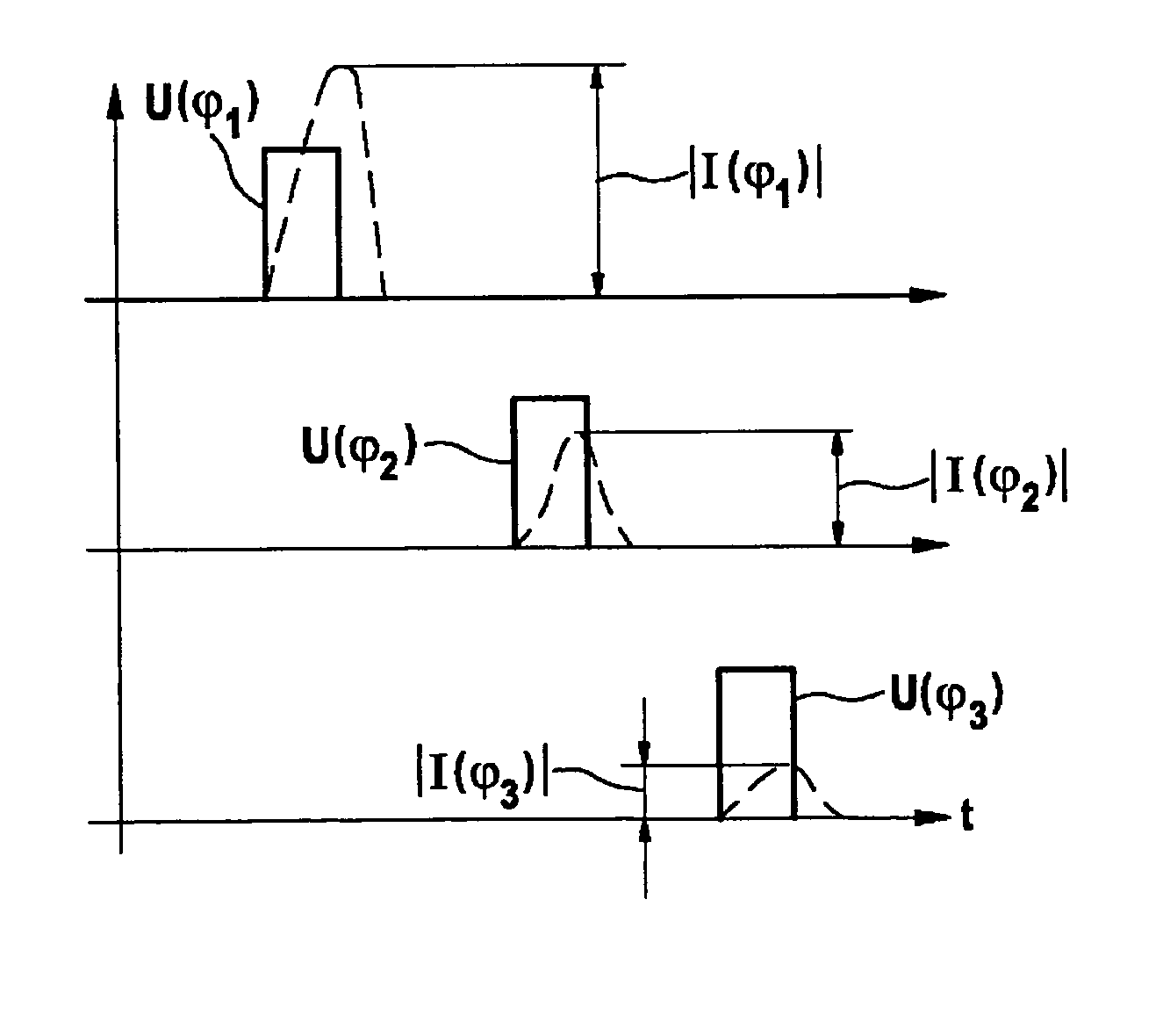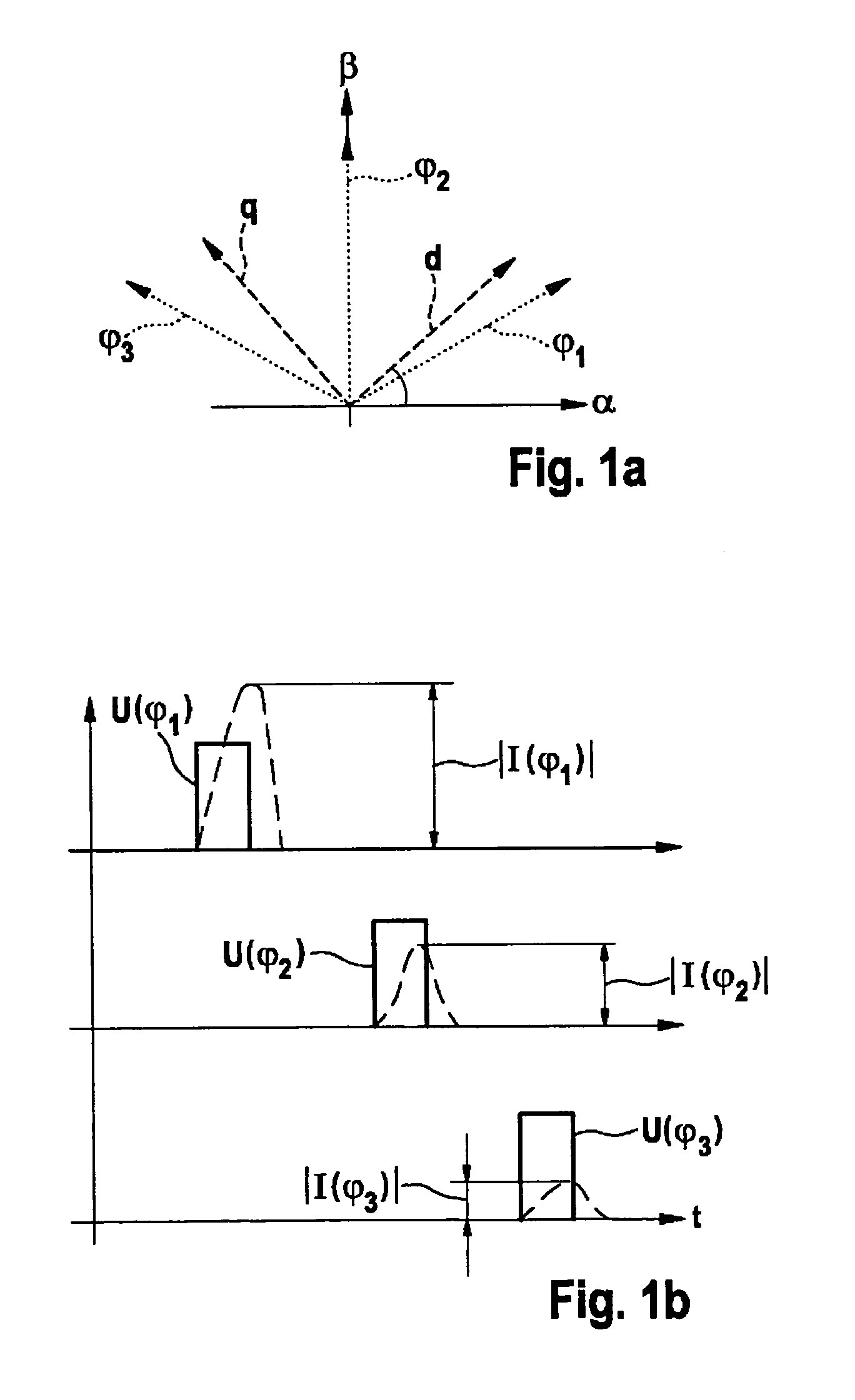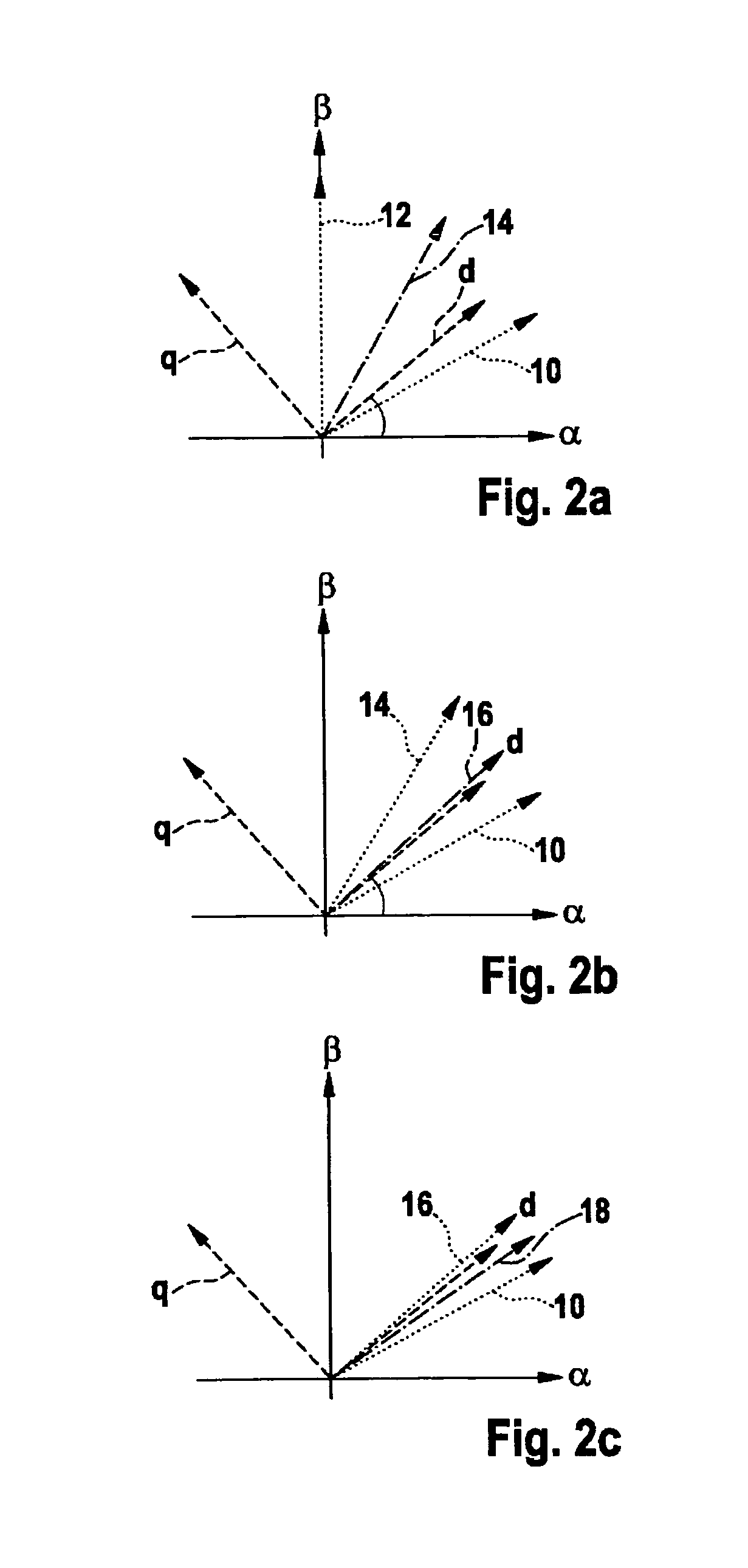Determining the rotor angle of a synchronous machine at standstill with the aid of iterative test pulses
a technology of synchronous machines and iterative test pulses, which is applied in the direction of electronic commutators, motor/generator/converter stoppers, dynamo-electric converter control, etc., can solve the problems of affecting the accuracy of synchronous machines, etc., to achieve the effect of simple evaluation mechanisms and small investmen
- Summary
- Abstract
- Description
- Claims
- Application Information
AI Technical Summary
Benefits of technology
Problems solved by technology
Method used
Image
Examples
Embodiment Construction
[0042]FIG. 1a shows the initialization of the method according to the present invention with reference to a circuit diagram that is based on a rotor having a north and a south pole. The main magnetization direction, thus the field lines of the magnetic field produced by an excitation coil, extends along the axis characterized by d. The q-axis extends orthogonally thereto and corresponds to the transversal axis which is orthogonal to longitudinal axis d, the q-axis extending orthogonally to the field lines of the excitation magnetic field. Initially, the angular directions that are each offset by 60° from one another are scanned in accordance with the active scanning method, i.e., in that a voltage pulse is emitted in each of directions φ1, φ2 and φ3. In other words, three different voltage pulses are transmitted to the stator, which, as a result, generates three different magnetic fields in directions φ1, φ2 and φ3. The corresponding current characteristics are recorded.
[0043]In FIG...
PUM
 Login to View More
Login to View More Abstract
Description
Claims
Application Information
 Login to View More
Login to View More - R&D
- Intellectual Property
- Life Sciences
- Materials
- Tech Scout
- Unparalleled Data Quality
- Higher Quality Content
- 60% Fewer Hallucinations
Browse by: Latest US Patents, China's latest patents, Technical Efficacy Thesaurus, Application Domain, Technology Topic, Popular Technical Reports.
© 2025 PatSnap. All rights reserved.Legal|Privacy policy|Modern Slavery Act Transparency Statement|Sitemap|About US| Contact US: help@patsnap.com



